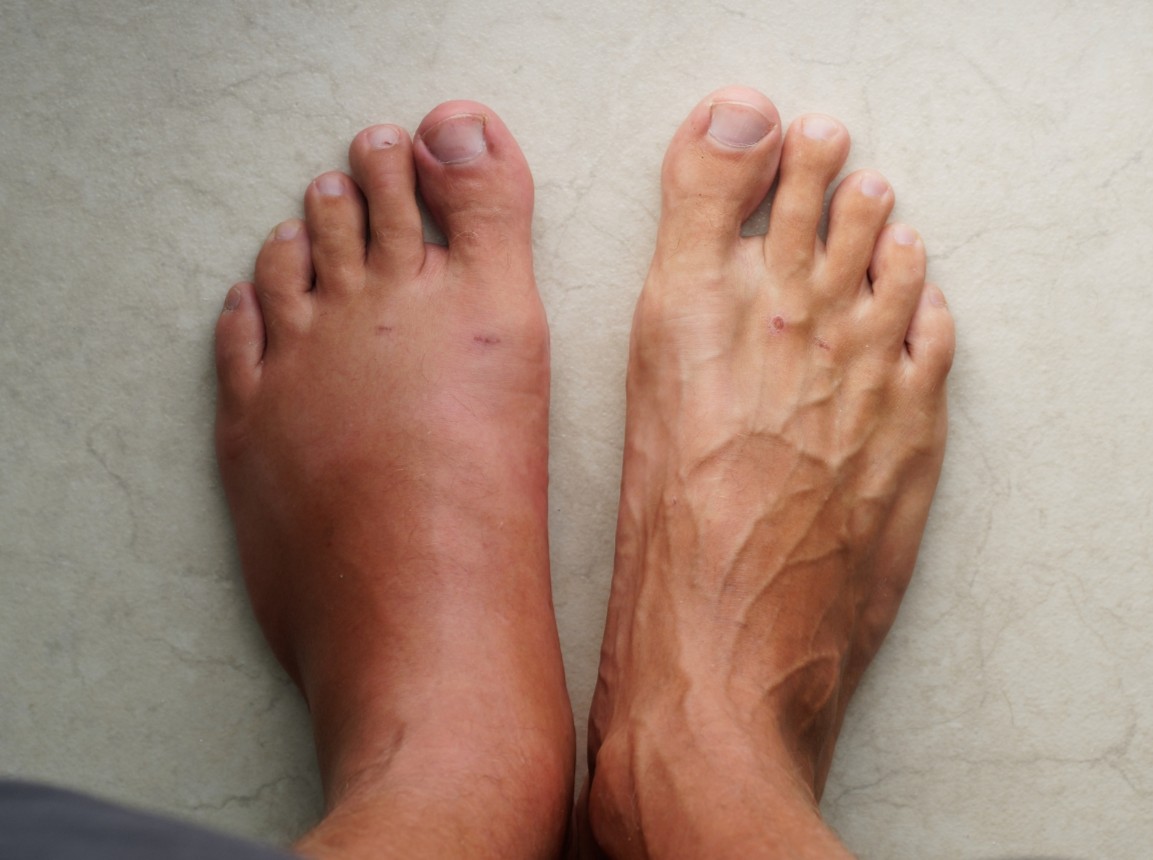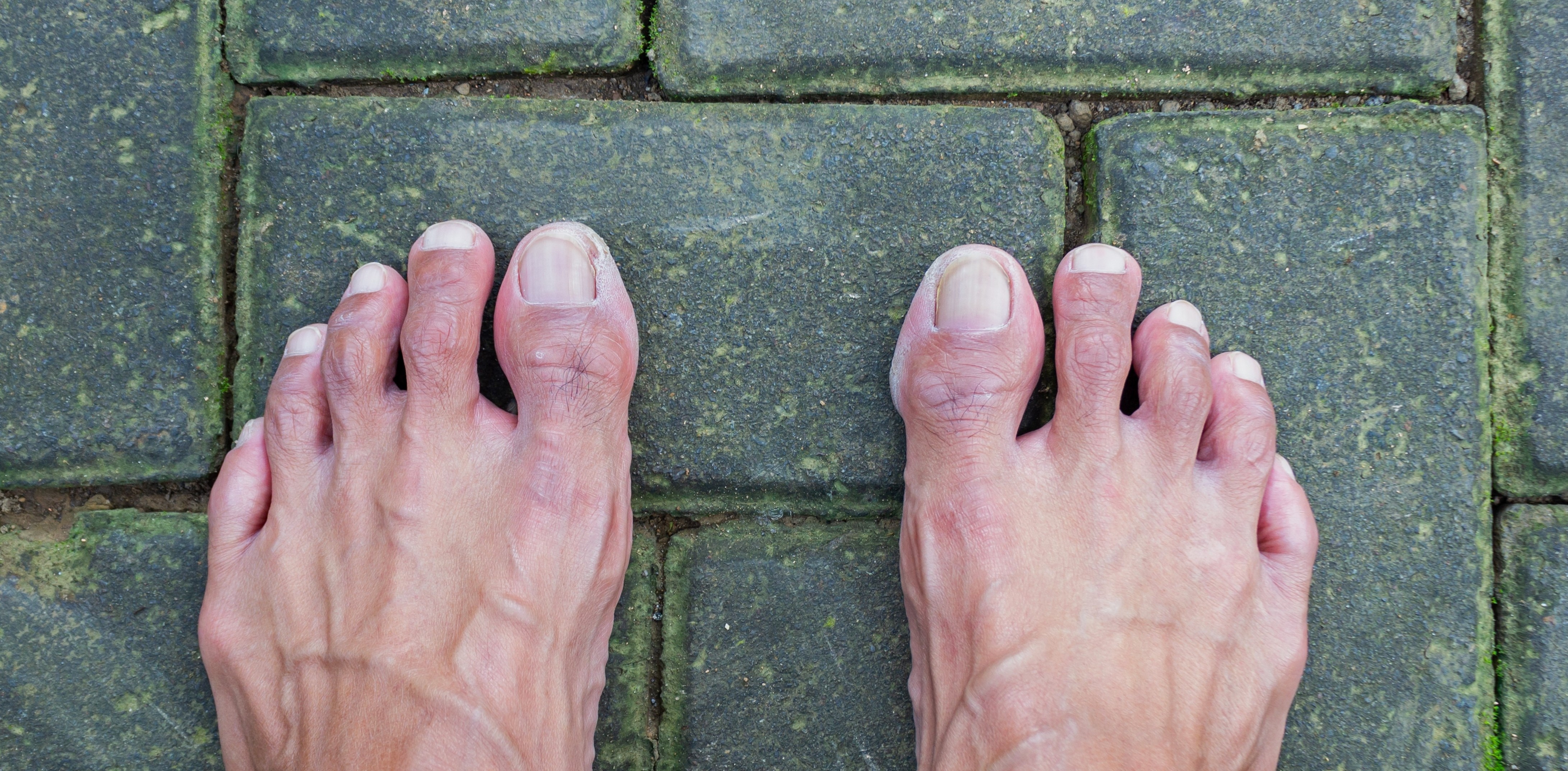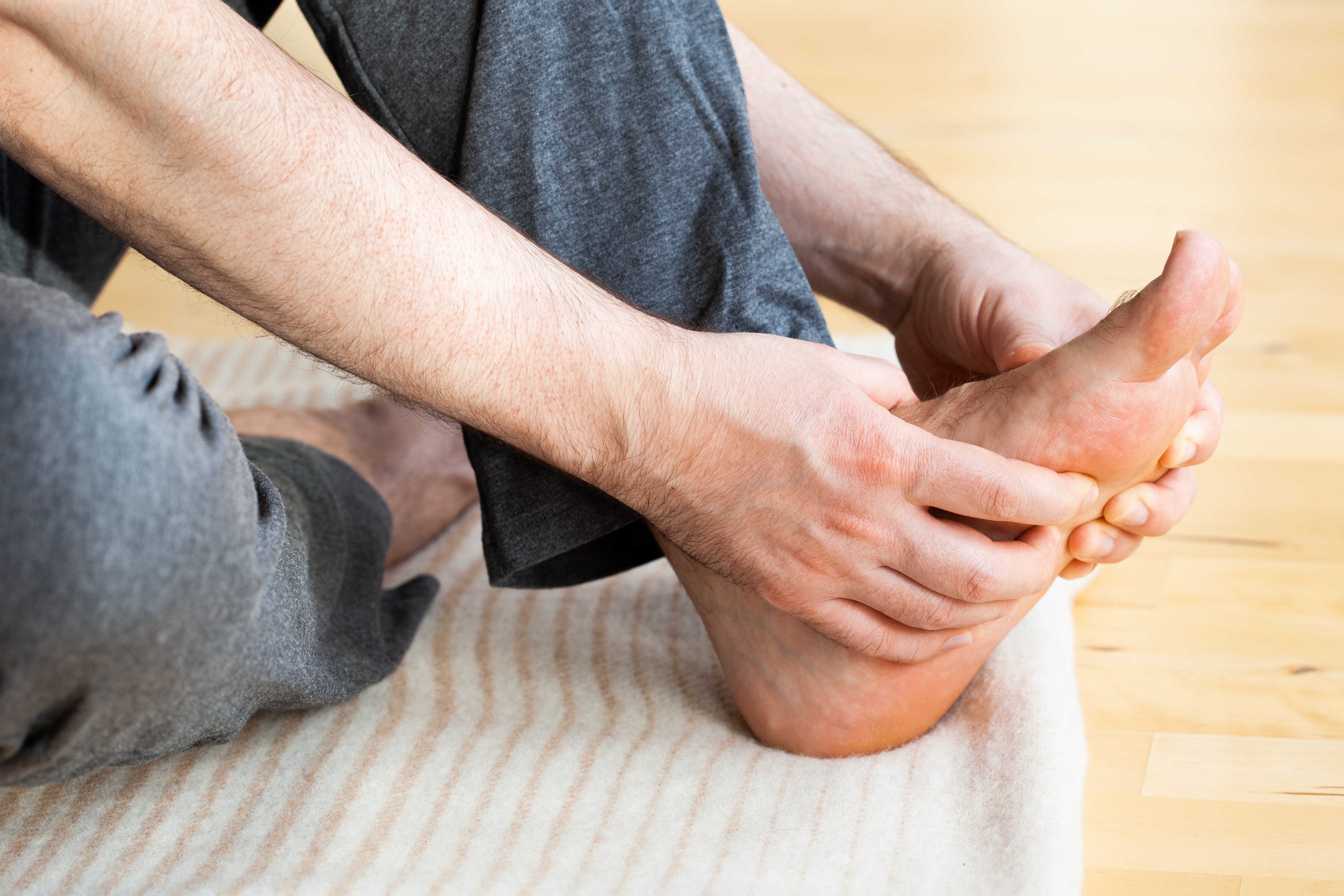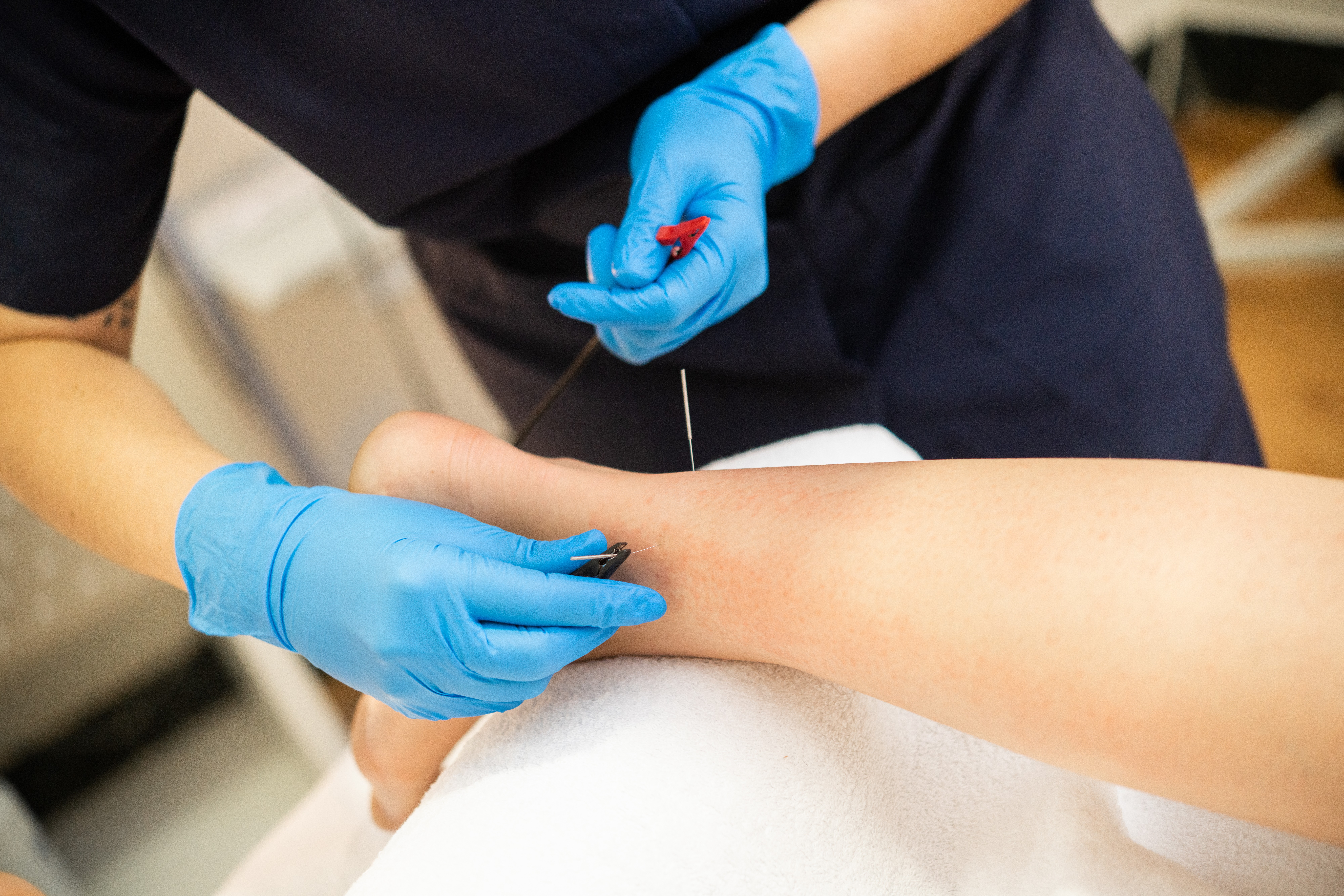Essential terminology: Your ‘plantar fascia’ is a thick band of connective tissue that attaches to your heel and then spans your foot like a fan to connect to all five toes. You have connective tissues all around your body. In fact, connective tissue is one of the four main tissue types. It serves to connect, stabilise and enclose musculature and structures throughout the human body. Then plantar fascia helps maintain the shape of the foot by supporting the bones, joints and muscles, thereby helping to maintain the shape of your arch.

Plantar Fasciitis describes the damage and subsequent inflammation to your plantar fascia (see above). When the fascia is overloaded with pressure, strained or directly damaged, it becomes inflamed. It is this inflammation that causes the painful symptoms that is known as plantar fasciitis.
As the plantar fascia spans the arch, it is stretched every time we take a step. The body is well used to this and our normal daily walking and activities. However, if we overuse, overload or generally strain the fascia past the point that it can handle, it will develop microtears through its fibres, causing damage and inflammation.
The plantar fascia can become damaged from a variety of causes, including:
It is important to not only look at the symptoms but the cause so that the fascia doesn’t keep getting damaged in the future. This happens when the cause isn’t a one-off activity but associated with the biomechanics of your feet, which is often a primary cause of plantar fasciitis.
Common symptoms of plantar fasciitis include:
Symptoms can come and go over months or even years, without the problem being resolved. Because the damage to the fascia can worsen, this condition must be effectively managed to prevent a partial tear, or even the complete rupture, of the plantar fascia.
Care must also be taken as the symptoms of other conditions may also closely match the symptoms of plantar fasciitis. A good example of this is Abductor Hallucis Tendinopathy, where the Abductor Hallucis muscle shares an insertion at the base of the heel with the plantar fascia.
The first step to treatment is getting a complete picture of what is happening with your feet and what the cause is, especially as there are often multiple contributing causes. From there, your Podiatrist will create a comprehensive treatment plan for you that takes into consideration your daily activities, lifestyle and goals. Initially, the focus of the treatment plan will be to reduce your current symptoms and get you out of pain, while long-term your treatment plan will work to prevent this from happening again. Once you’ve had plantar fasciitis, you’re more likely to damage your fascia again, so this must be a primary focus.
Depending on the severity of your symptoms, your treatment may include:
Depending on your symptoms and circumstances, various other treatment modalities may be recommended for your recovery, such as splints and pads.

.jpg)




The answer to this is truly dependant on you. Just like you can break your leg or sprain your ankle twice, you can definitely suffer from plantar fasciitis again. They key is to have the right preventative measures in place to reduce the risk of this happening again. By knowing about the condition and its causes, you can also make the best decisions for your feet. Make sure you talk through any questions you have with your Podiatrist and understand how to best protect and look after your feet.

We’ve all had those days — you come home after hours on your feet, kick off your shoes, and notice your ankles look puffier than usual.
Swelling in the feet, ankles, or legs (known medically as edema) isn’t always a reason to panic. It can be as simple as a
salty lunch or a long flight.
But what if it’s happening more often — or seems to be getting worse? Swelling can sometimes be a sign of something more serious. Here’s
what could be going on and when to check in with your doctor.
.jpg)
Every year on October 8th, the world celebrates International Podiatry Day - a day dedicated to
raising awareness about foot health and the vital role that podiatrists play in our overall well-being.

There’s been a lot of buzz about going barefoot. Some say it helps strengthen feet and improves performance, while others warn it can do more harm than good. The truth? It depends on the person, the surface, and how it’s done.

At Perform Podiatry, we specialise in conservative, evidence-based treatments that are safe, effective, and suitable for patients of all ages. One of the most successful options we offer is high-strength salicylic acid therapy.

When most people think of podiatry, they picture orthotics, skin/nail care, or sports injury treatment. But podiatry isn’t just about what’s
happening mechanically in your feet, it’s also about supporting the body’s natural healing processes.
One treatment that’s gaining popularity in podiatric care is acupuncture — a technique with ancient roots and modern
scientific backing.

Even a few minutes of foam rolling per day can make a significant difference in your lower limb health. Focus on the calves, hamstrings, IT
band, and plantar fascia. Combine with stretching and strengthening for best results.
Read this blog to find out more about the benefits of Foam rolling.
Keeping your family on their feet and helping them to walk, run, play and exceed their goals is why we love getting up in the morning.
Ground Floor, One Health Building
122 Remuera Rd, Remuera
Auckland 1050, New Zealand
| MON - FRI | 7:30am – 6:30pm |
| SAT | 8:30am – 4:30pm |
| SUN | Some availability |
Make an Appointment
Online Schedule
Our virtual receptionist is available 24/7 to help with general questions, booking requests, and clinic information, even when our team is busy, or it's after hours.
Whether you're calling us or using our website, you'll get fast assistance any time of day. And if your query needs a personal touch, a member of our team will follow up as soon as possible.
If you’d like to see a podiatrist who speaks your preferred language, just give us a call and we’ll help you book.